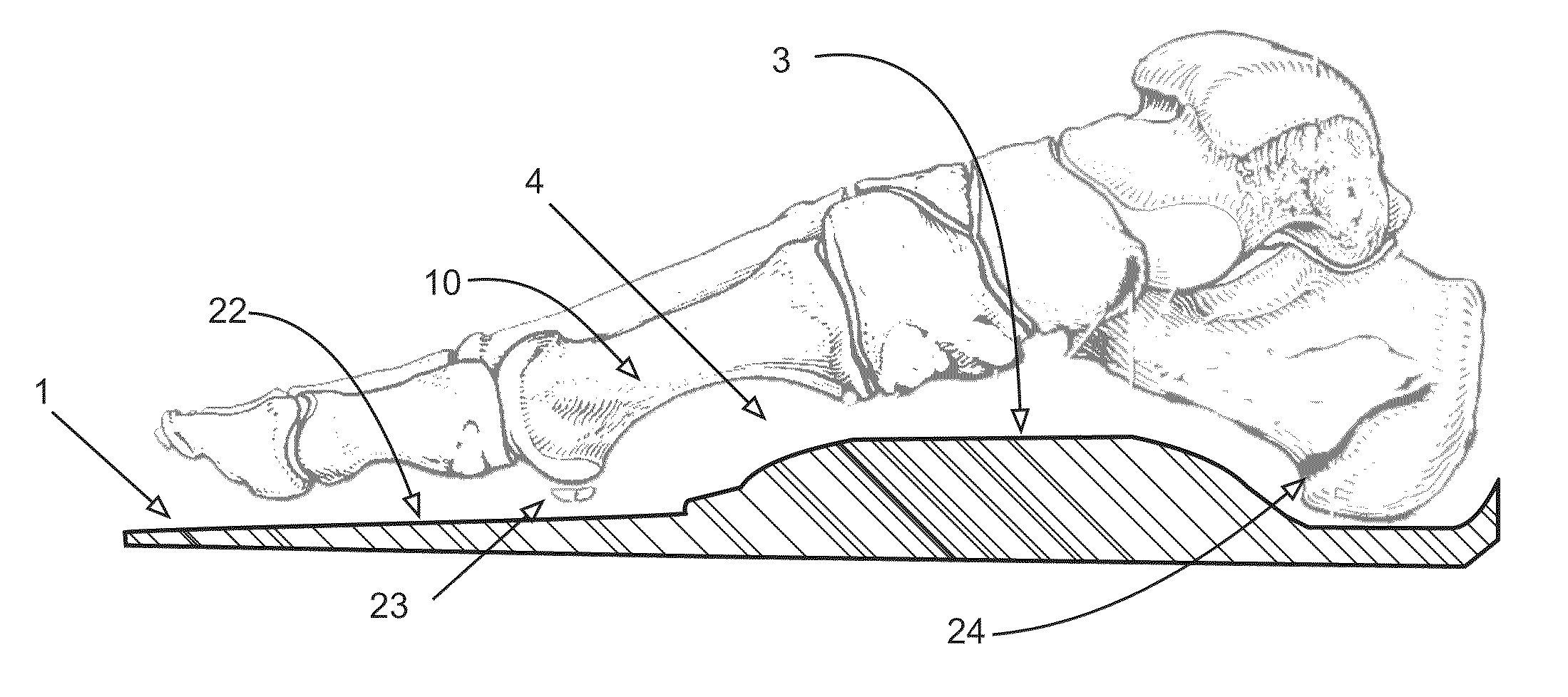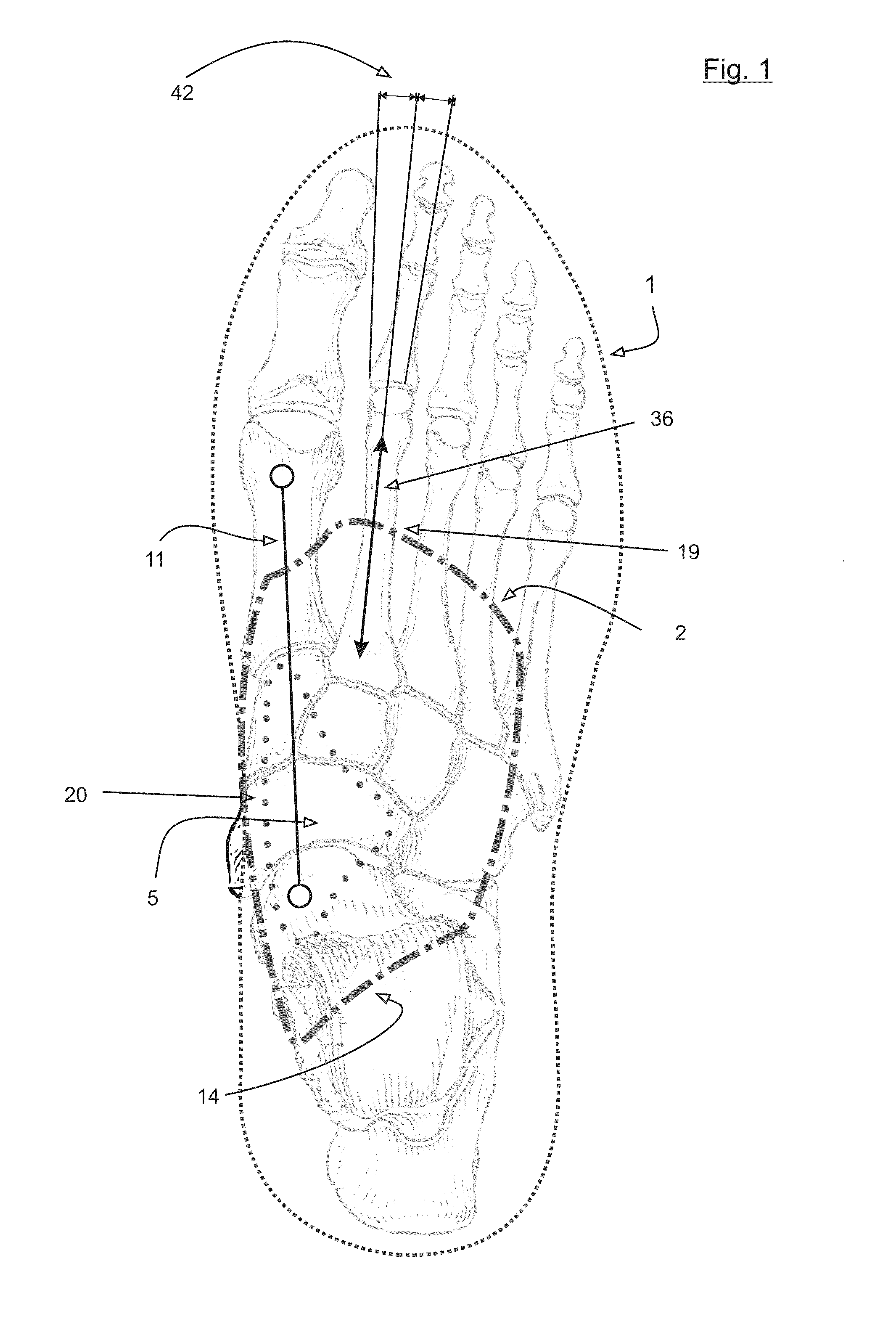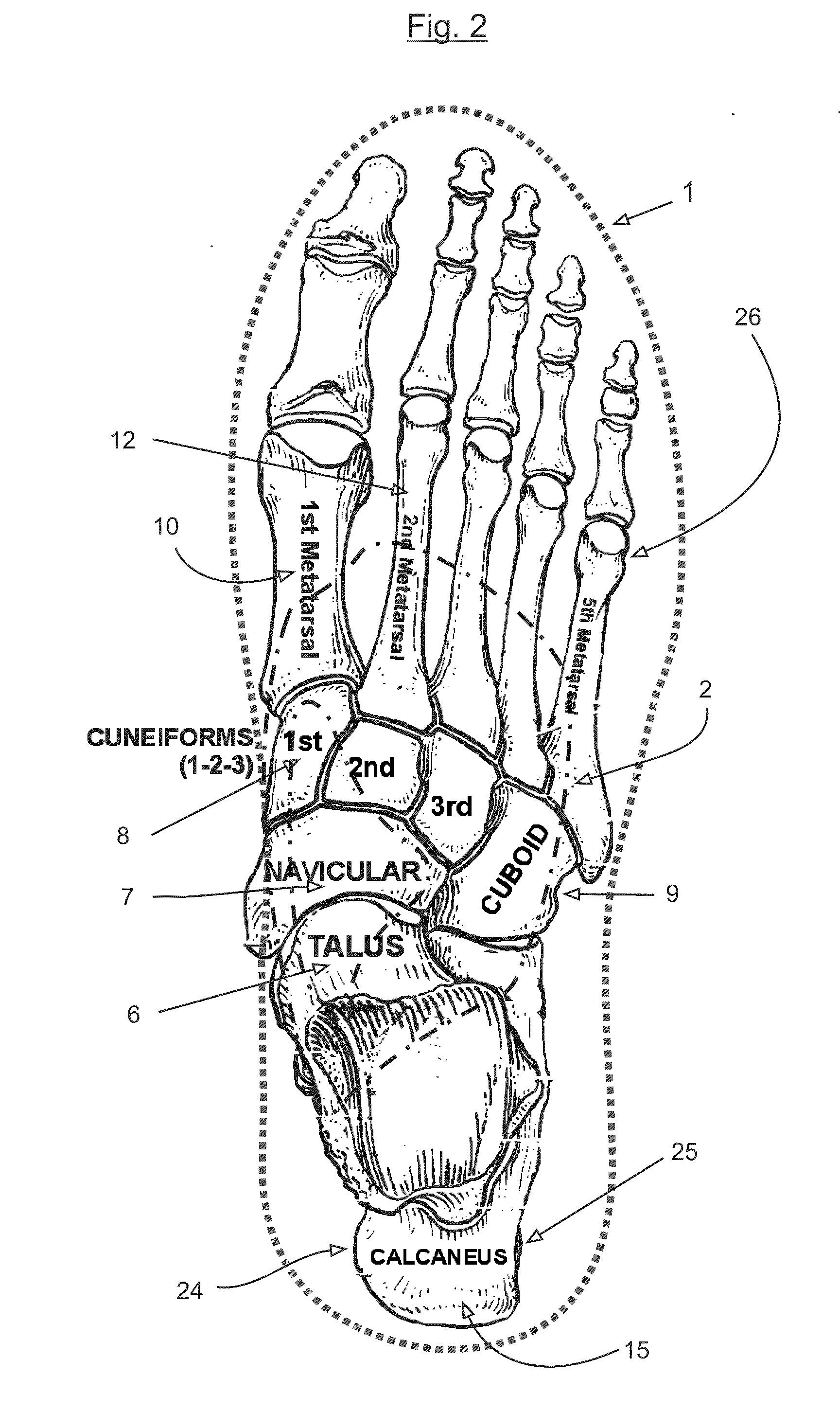Motion control insole with muscle strengthening component
a technology of insoles and muscle fibers, which is applied in the direction of uppers, bootlegs, apparel, etc., can solve the problems of reducing the predisposing the foot to injury, and weakening the supporting musculoskeletal structure of the foot, so as to reduce the excess eversion of the calcaneus and encourage the formation of a metatarsal arch. , the effect of promoting th
- Summary
- Abstract
- Description
- Claims
- Application Information
AI Technical Summary
Benefits of technology
Problems solved by technology
Method used
Image
Examples
Embodiment Construction
[0031]The present invention provides for a device in the form of a shoe insole or shoe midsole or integrated shoe outsole-midsole-insole unit 1, capable of providing a progressive catalyst for muscle stimulation, muscle strengthening and muscular adaptation while encouraging proper toe off position and controlling for excess pronation of the foot.
[0032]The present invention may be constructed of materials of a semi-pliable and compressible nature such that it is comfortable to the plantar surface of the foot. The materials of choice may include, but are not limited to, polyurethane and its derivatives, ethyl vinyl acetate and its derivatives, visco-elastic polymers, natural sponge rubbers and its derivatives, and other materials displaying similar characteristics.
[0033]In particular the present invention discloses a primary raised area 4 designed to engage the plantar surface of the human foot. Said primary raised area 4 has a centrally highest region 3 forming an elevated plateau 5...
PUM
 Login to View More
Login to View More Abstract
Description
Claims
Application Information
 Login to View More
Login to View More - R&D
- Intellectual Property
- Life Sciences
- Materials
- Tech Scout
- Unparalleled Data Quality
- Higher Quality Content
- 60% Fewer Hallucinations
Browse by: Latest US Patents, China's latest patents, Technical Efficacy Thesaurus, Application Domain, Technology Topic, Popular Technical Reports.
© 2025 PatSnap. All rights reserved.Legal|Privacy policy|Modern Slavery Act Transparency Statement|Sitemap|About US| Contact US: help@patsnap.com



